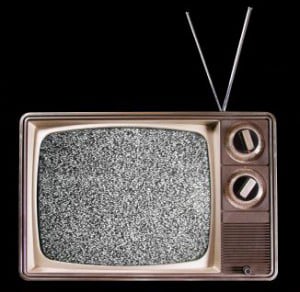
In just over one year, Canada is scheduled to complete the digital television transition, as stations switch from analog to digital broadcasts. While cable and satellite subscribers will not notice the change, more than one million Canadians that rely on over-the-air signals will be affected. Despite the experience in other countries that left consumers without digital converter boxes staring at blank screens, the Canadian government seems content to leave the switch to the private sector, implausibly claiming "industry-led solutions will ensure a smooth transition for consumers."
The basic notion of the transition is fairly straightforward. For decades, Canadian broadcasters have used spectrum to transmit over-the-air analog broadcast signals. Before the widespread use of cable and satellite, many Canadians used antennae -- "rabbit ears"-- to access those broadcast signals.
On Aug. 31, 2011, Canadian broadcasters will switch from analog to digital broadcasts. The shift to digital brings several advantages including better image and sound quality as well as more efficient use of spectrum that will open the door to new telecom services. It also requires those relying on over-the-air signals to obtain a digital converter box to convert the digital signal back to analog.
Contrary to popular belief, many Canadians still rely on over-the-air signals. In its latest update on the transition, the Canadian Radio-television and Telecommunications Commission estimated that up to 857,000 households in larger markets do not subscribe to either cable or satellite. On top of those households, tens of thousands of rural households also depend upon over-the-air signals.
US program cost $1 billion
The CRTC has opened the door to a satellite alternative for rural communities, but households that rely on over-the-air signals in larger markets will need a digital converter box in order to continue to watch programs on their existing televisions. In the United States, the government subsidized the cost of the transition, establishing a coupon program that ultimately cost more than $1 billion and forced a six-month delay of the transition when politicians feared that too many consumers were not ready.
Unlike the U.S., there will not be a Canadian subsidy program. While the additional costs could affect lower-income Canadians, who are also more likely to rely on the over-the-air signals rather than cable or satellite services, Canadian Heritage Minister James Moore has firmly rejected a similar approach.
A successful transition also depends upon educating Canadians about the changes. For example, the United Kingdom has established Digital UK, an independent, not-for-profit organization to the lead its process. The organization is funded by the country's private broadcasters and was established at the request of the government. It maintains a comprehensive website and has launched a nationwide advertising campaign.
By contrast, other than the occasional CRTC release -- chair Konrad von Finckenstein has been sounding the alarm bells on the digital transition for months -- the issue has attracted virtually no public attention in Canada. Moore has told Canada's broadcasters that Canadians had "fair notice" about the transition and that the broadcasters should be prepared to complete the switch on schedule, emphasizing the transition "must remain on track."
CRTC alarm faces 'indifference'
But most Canadian broadcasters see little value in investing in a public education campaign without government support, particularly since they are already spending millions on digital transmitters. In fact, the mandatory deadlines for the transition were only established after it became apparent the broadcasters would not make the switch voluntarily.
The CRTC has tried to push the issue onto the public agenda, but has thus far faced government opposition and broadcaster indifference. As a result, when Canada's broadcasters flip the switch next summer, hundreds of thousands of Canadians may find themselves on the wrong side of a new digital divide. ![]()















Tyee Commenting Guidelines
Comments that violate guidelines risk being deleted, and violations may result in a temporary or permanent user ban. Maintain the spirit of good conversation to stay in the discussion.
*Please note The Tyee is not a forum for spreading misinformation about COVID-19, denying its existence or minimizing its risk to public health.
Do:
Do not: